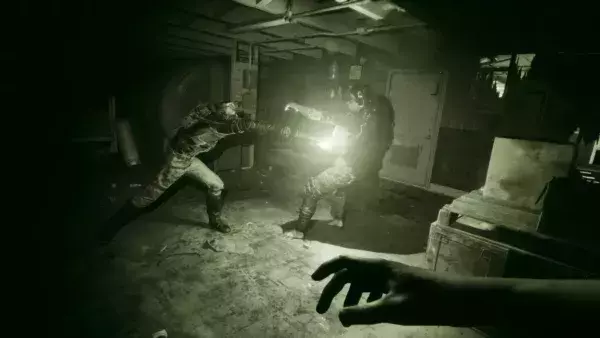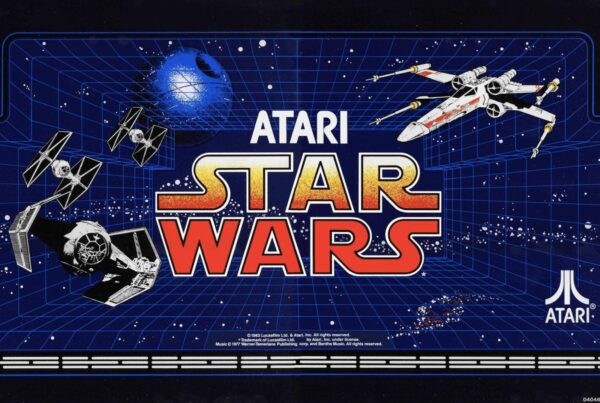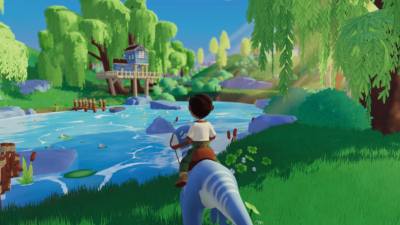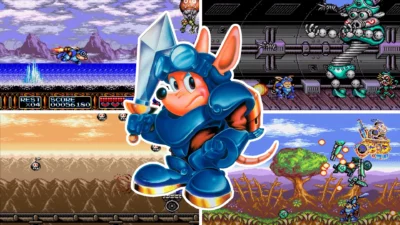
Genre: Puzzler
Format: iOS / Android / PC
Developer: Beyondthosehills
Publisher: Beyondthosehills
Release: TBC 2019
Where so many games bombard our senses with intense detail, movement, and colour, Reky instead goes the other way; with its minimal aesthetic and clean lines, it’s a puzzler that favours clarity and elegance over technical whizzes and bangs. The aim is to guide a tiny bouncing ball around increasingly complex mazes of interconnecting paths – there are coloured blocks that can be manipulated to form bridges or elevators to higher levels, while portals provide shortcuts to unexpected places. In short, it’s the perfect kind of experience to enjoy in lunch breaks or on train journeys.
There’s a reason why the game has that pristine, M.C. Escher-esque look, too: the game’s orthographic structures were dreamed up by a professional architect. Work on Reky began in 2015, when Athens-based developer Beyondthosehills – which comprises husband-and-wife team Andreas Diktyopoulos and Maria Aloupi – began experimenting with some initial ideas for an abstract puzzle game. With a rough prototype put together in Unity, the pair turned to architect Konstantinos Sfikas to help create Reky’s distinctive layouts.
“First of all, we tried to create the concept art together with Konstantinos,” Maria says of those early level designs. “So when we found the direction, Konstantinos started working in an architectural program; he took the levels from me one by one, and made the visuals for each.”
 6.jpg” alt=”” width=”1920″ height=”1080″ />
6.jpg” alt=”” width=”1920″ height=”1080″ />Reky contained around 30 levels in its stages, but the number went into three figures once architect Konstantinos Sfikas got involved.
Over the summer of 2018, the three designers sat together for a four-month bout of level creation: Maria would work out the placement of blocks, pathways, and portals, carefully plotting out the puzzles themselves, while Konstantinos worked on the background details that connect all the game elements into a unified structure.
“We both love design and architecture, and we tried to find someone who could be part of the team and help us with this idea,” Andreas says. “So we found an architect, and he created all the architectural design of the game around the levels. Konstantinos does the real structures, and creates them in an architectural program. Then we put that inside the game engine, Unity, to create the final aesthetic.”
“It’s these architectural elements that give the player vital clues as to how the platforms and portals work. We had a prototype with the rules there, but it was difficult because if you don’t have the whole surroundings the levels create, it’s very tricky to understand what’s taking place,” Andreas explains. “It needs the illusions created by the orthographic camera.”
 21.jpg” alt=”” width=”1920″ height=”1080″ />
21.jpg” alt=”” width=”1920″ height=”1080″ />Reky’s architectural design isn’t just for decoration: it helps guide the player through the increasingly complex knots of portals and paths.
Musical beginnings
Before they founded their indie games studio in 2012, Maria and Andreas were in very different lines of work: Maria was a concert pianist, while Andreas was a software engineer and musician. The pair had previously founded a cultural venue that played host to contemporary art and music, but then the Greek financial crisis made them think about other ways they could pursue their creative interests.
“I decided to follow Andreas’ idea, to develop games,” Maria says. “Andreas is a musician but also a programmer – he has the technical background. I decided to follow this, not only because it can be a real business, but also because I found it very creative.”
“I’d been building games since high school – some very simple text games, and stuff like that,” Andreas adds. “I always wanted to make games; I saw the power of games as a medium. So at some point after seeing all these cultural things from different angles – classical music, contemporary music, art – we both understood that we wanted a medium that put all of this together.”
 31.jpg” alt=”” width=”1920″ height=”1080″ />
31.jpg” alt=”” width=”1920″ height=”1080″ />”We wanted to do a puzzle game, but something more abstract,” Andreas says of Reky’s early development.
Beyondthosehills’ first game was quite ambitious for a fledgling developer: point-and-click adventure The Minims was set in a fantasy world of whimsical creatures and problems to solve, and took approximately two years to make.
“We learned a lot of things,” Andreas says of his time working on The Minims. “In the end, we had to learn a lot of project management stuff that we needed to complete the game. One of the other things we learned is that we didn’t know anything about marketing, which is one of the reasons why it’s not so well-known, even though we had some very good reviews on App Store.”
“We’ve learned that we have to be good at a lot of things, not only development,” Maria agrees. “Marketing or finding a publisher is really important. We’re trying to do better the second time.”
 74.jpg” alt=”” width=”1920″ height=”1080″ />
74.jpg” alt=”” width=”1920″ height=”1080″ />“We definitely want to go to other consoles,” Andreas says. “That’s the plan: to put it on as many platforms as we can.”
With Reky, there’s the sense that Maria and Andreas have stripped everything back to basics: the problem-solving and soothing atmosphere of The Minims still remain, but their new puzzler is more contained, minimal, and focused. Reky is in its final stages of development, and due for release later this year. Its collection of 100-or-so increasingly complex levels is essentially complete, but its creators are still making adjustments here and there, following feedback from players at recent events like London’s Pocket Gamer Connects.
“At one point, we thought our puzzles were very easy, after all these years of working on them,” Andreas says, “but this wasn’t the case at all. When we got to London, we said, ‘OK, no, the challenge is there.’ We’ve played these levels so many times!”
What’s in a name?
Through our chat with Andreas and Maria, one question lingered in the back of our minds: what does Reky mean, exactly? Does it have some deeper philosophical meaning? A connection to the game’s less-is-more theme?
“It doesn’t mean anything,” Andreas reveals, matter of factly.
“Nothing,” Maria concurs.
“It’s one of those names that doesn’t mean anything, but sounds nice to us. We spent two years trying to find the name! In the beginning it was called The Block Project.”





